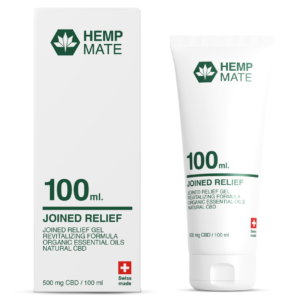„ …Predkladám im, že tak ako na začiatku nie bezvýznamne, nemálo odlišne a do vnútra ich myslenia: Niektorí s pochybovaním, o čom bude výsledok, iní so strachom, že čo bude cenzurované : niektorí dúfajúc v nádej , iní s dôverou v to, čo musia hovoriť. A ja, možno v každom z týchto postavení, ako „kde ostal“ predmet vstupujem, možno v iných časoch rozlične ovplyvnený; a pravdepodobne mohol by som v tomto výraze teraz aj odkryť, kto z nich prebieha na rôzne strany najviac, ale už priveľa pokusov tak urobil som, a pomyslenie komu to pomáha , mi dodalo silu vnútra k vášni, výdavok viacej vítaný ako nepodstatný predhovor. Ktorí myslia, že ja zostanem nečinne bez akejkoľvek otázky. Nech som zodpovedný ,ak to nie je inak, potom radosť a prianie, ktoré prinesiem všetkým, ktorí prajú a podporujú slobodu krajíny: z čoho tejto celej reči bude svedectvo, ak nie trofej. Pre to nie je sloboda, v ktorú môžeme dúfať, to nie rozhorčenie má vstávať v spoločenstve, ktoré nenechá žiadneho človeka na tomto svete nazdať sa; ale keď sťažnosti sú voľne počuteľné, hlboko premyslené a chytro naprávané , napokon je najvyšší stupeň krajinského viazania slobody, ktoré mudrci hľadajú. Ku ktorým ja prehováram teraz očividne nahlas, ktorým prednesiem,že my sme tí, čo sa objavili na dobrej strane, a ešte doteraz ako kroky nevýhody tyranie a povery zasadené do našich princípov ako pod zahalením rímskeho návratu, to bude prisudzované najprv, ako je väčšinou očakávané, za silnej pomoci Boha, nášho vysloboditeľa, popri vašom dôveryhodnom vedení a nezlomnom vedomí, lordi a spolky Anglicka…“
John Milton, Areopagitika, reč Mr. Miltona, Pre slobodu neobmedzenej tlače, parlamentu Anglicka
Úvod
Tému hodnotenia webovej stránky The Times som si vybral hlavne z praktických dôvodov- nedostupnosť papierového vydania akéhokoľvek zahraničného denníka v mojom okolí. Rozhodoval som sa medzi troma internetovými vydaniami anglických denníkov: The Times, The Independent, The Daily Star. Najviac ma však oslovili práve The Times, jednak obsahovo -ich web mi pripomínal www stránku SME na Slovesku, a jednak ma upútal na prvý pohľad aj z grafickej stránky, na rozdiel od stránok napríklad The Independent, ktorý na mňa pôsobil chladno a príliš konzervatívne. Čo sa týka literatúry, mal som k dispozícii len obmedzené možnosti našej miestnej knižnice a dostupné možnosti na internete, kde napriek niekoľkým dňom venovaných hľadaniu dátumu vzniku webovej stránky The Times, sa mi táto úloha nepodarila splniť,a som uspokojený tým, že sa mi podarilo zistiť s mojou chabou angličtinou aspoň rok vzniku ich stránky.
Stručná história
The Times boli založené v 1785 s názvom The Daily Universal Register . Nešťastný názov Universal znamenal, že The Times boli všeobecne ignorované verejnosťou. Walter zmenil titul po 940 vydaniach na The Times. John Walter bol tiež prvý editor z papierového vydania.
Rezignoval v roku 1803, a tak sa premenil i vlastník redakcie,keď prišiel k slovu jeho syn John Walter,druhý . Otec John Walter strávil šestnásť mesiacov v tlačených The times, ale jeho priekopnické úsilie získať európske správy,predovšetkým z Francúzska, pomohlo vybudovať papierovú reputáciu medzi politikmi, výrobcami a finančníkmi.
The Times používajúc príspevky z platných zdrojov na poli politiky, vedy, literatúry a umenia, si vďaka tomu začali budovať vysokú reputáciu. Z veľkej časti ranného života Times-ov, bolo profitovanie The Times veľmi velké a súťaž konkurencie minimálna, a tak mohli platiť ďaleko lepšie ako jeho súperi,jednak za informácie alebo pisateľov-spisovateľov.
V roku 1809, John Stoddart bol ustanovený šéfredaktorom, nahradený v 1817 Thomasom Barnesom. Pod Barnesovým vedením a jeho nasledovníkom v 1841,Johnom Thadeusom Delaneom , vplyv The Times vystúpil do nebeských výšok , zvlášť v politike a okolí Londýna . Petr Fraser a Edward Sterling boli dvaja známi ľudia, ktorí získali pre The Times satirické pomenovanie „hromovládca“ (z „My sme „zahrmeli“ ďalší deň článok na sociálnej a politickej reforme.“).
The Times boli prvé noviny,ktoré vysielali zvláštnych korešpondentov do zahraničia, a to bolo prvoradé posielať korešpondentov na miesta vojnových konfliktov. W.H.Russell, armádny korespondent vo vojne o Krym, bol ohromne vplyvný s jeho zásielkami do Anglicka.
V ďalších udalostiach z 19.storočia , The Times oponovali Corn Laws ,až po početných demonštráciách, inak presvedčený redakčný kruh zaćal, ale iba neochotne, podporovať pomoc obetiam z Irska . Behom Americkej občianskej vojny, The Times reprezentovali pohľad na bohaté triedy, secesionistov, ale neboli to podporovatelia otroctva. Ich podpora jednotlivých politikov bola vnútorným pohonom a neposluhovali verejnej mienke.
Tretí John Walter uspel v nasledovaní svojho otca v roku1847. Napriek tomu,že Walters sa stal konzervatívnejší, noviny pokračovali ako viac-menej asi rovnako nezávislé. Napriek tomu od roku 1850 začali The Times trpieť na objavovanie sa konkurencie zo strany tzv. lacných novín,penny press, presnejšie The Daily Telegraph a The Morning Post.
V roku 1922, John Jacob Astor , zakúpil The times z rodinného statku rodiny Northcliffe. Noviny získali mieru opovrženia v 1930-tych rokov s ich obhajobou Nemecka, editor Geoffrey Dawson bol tesne príbuzný s tými vo vláde, ktorí praktikovali uspokojenie, najpozoruhodnejšie Neville Chamberlain .
V roku 1967, členovia Asorskej rodiny predali noviny kanadskému vydavateľskému magnátovi Royovi Thopsonovi a v tom istom roku začali produkovať tlačené správy na prvej strane novín. (Predtým, predná strana uvádzala malé reklamy, obvykle určené záujmom bohatých triednym vrstvám v britskej spoločnosti.) Thomson corporation sa zlúčila s The Sunday Times a vytvorila Times Newspaper Limited.
Pracovné spory primäli noviny zasztaviť vydávanie takmer na jeden celý rok v období 1.decembra 1978 až do 12. novembra1979.
Manažment The Thomson corporation bojoval o podnikanie pod tlakom z tlačovej únie na vrchole odborových síl. Odborové požiadavky boli stále viac obtiažne na kompromis. Manažment nebol spokojný so žiadnou volbou, ale pokúšal sa chránit oba tituly nájdením kupca, ktorý by bol zárukou zachovania oboch titulov, a taktiež takého, ktorý mal dostatočné finančné záruky na rozvoja prechod k novým technológiám tlače novín.
Niekoľko takých sa aj objavilo vrátane Roberta Maxwella, Tiny Rowlanda a Lorda Rothermerea. Avšak jediný kupec, ktorý spĺňal požiadavky na plnej úrovni, bol austrálsky mediálny barón Rupert Murdoch.
Obe noviny mali tak prežitie zaručené a vyznačený významný vlastný cieľ pre radikálne elementy vo vnútri odborovej organizácie.
RUPERT MURDOCH
V roku 1981, oba tituly, The Times a The Sunday Times boli odkúpené od Thomsonovcov Rupertovým Murdochovým News International.
Murdoch rýchlo začal tlačiť svojun značku na papier The Times, vymenil editora Williama Reesa-Mogga za Harolda Evansa v roku 1981. Jedna z jeho nejdôležitejších zmien bola v zavádzaní nových technologií a racionalizačné opatrenia. V mesiacoch marec až máj 1982, nasledovala dohoda s úniou tlače, linotyp-tlač horúcim kovom,ktorý bol vo zvyku tlačenia The Times od doby 19. storočia bol stahovaný a nahrádzaný vstupom počítača a fotosadzbou. Toto dovolilo,aby personál z tlačiarenských hál bol redukovaný na polovicu. Priamy vstup textu novinárov („jednotlivý úder“- vloženie) nebol ešte dosah, a tak to bolo len dočasné opatrenie až do presťahovania sa do Wapping dispute v 1986, ktorý bol vidieť z domova na New Printing House Square v Grays Inn Road .
V júni 1990, The Times opustili politiku používania na prvý odkaz („Pán“, „Pani“, alebo „Slečna“ predpony pre životné osoby), ale pokračujú v užívanie na následujúce odkazy. Tým viac formálný štýl je teraz uvedený v „Court and Social“ stránke, aj keď „Pani“ je výraz prijateľný v tejto časti.
V novembri 2003,News International začal produkovanie novín v oboch vydaniach používať kompaktné veľkosti. 13.septembra 2004 , vo vydaniach vo všedný deň novín bol začaný predaj v Severnom Írsku. Od tej doby (1.november 2004) , noviny boli tlačené výhradne v kompaktnom formáte. Zatiaľ,čo noviny publikované v dvojitej edícii prehlasovali , že kompaktné verzie uvádzajú viacej senzačných príbehov,než hárky, ktoré prinášajú celebrity na prednej strane. Toto bolo zamietnuté manažmentom v News International.
The Conservative Party oznámila plány licitácie namierenej proti The Times,že spôsobili incident, v ktorom noviny proklamovali, že konzervatívny volebný stratég Lynton Crosby priznal, že jeho strana nevyhrá hlavné voľby v roku 2005 . The Times neskôr publikovali článok, a tým bol spor zažehnaný.
6. júna 2005, The times znovu navrhli dopisovateľskú stránku, preorientovaním sa z pisateľskej praxe dopisovateľov, na korešpondentov zamestnaných na plný úväzok . Podľa jeho hlavného článku , „Od našich vlastných korešpondentov“, to bolo za účelom, aby sa vošlo viac dopisov na stránku.
V septembri 2005, celková výrobná cena The Times bola zvýšená až na 60pencí, taktiež ako The Daily Telegraph, The Guardian a 5 pencí nižšia ako The Independent . To bolo po prvý raz za posledných 12 rokov , že celková výrobná cena The Times sa vyrovnala svojim súperom, jasné znamenie toho, že News International sa už dlhšie pripravovalo na cenovú vojnu, ktorá vypukla v septembri 1993 zrezaním ceny na 45 až 30 pencí za The Times.
The Times dnes
Cena novín je dnes stanovená na 65 pencí výrobných nákladov na číslo vo všedný deň vo Veľkej Británii (20p pre študentov, v obchodoch niektorých univerzít), a 1.30 v sobotu.The Sunday times – sesterské noviny The times, ich celková výrobná cena je 2 libry.
Certifikovaný priemerný predaj v novembri 2005 ukázal, že The Times predali v priemere 692581 kópií denne.To bol najvyšší predaj pod vedením Ruperta Murdocha od jeho nastúpenia ako editora denníka. Tým si The Times zabezpečili pevné postavenie pred denníkmi ako je The Daily Telegraph v rámci plnej sadzby, aj keď The Daily Telegraph zostáva v líderstve vďaka predplatiteľom, ktorých má viac ako 300 000 a s obehom 905 955 kópií denne.Jednoznačným lídrom trhu bol The Sun s predajom prevyšujúcim oba denníky dokopy, 3 274 855 kusov denne.
Britský obchodný prieskum v roku 2005 označil The Times ako lídra dennej tlače pre obchodníkov . Tento nezávislý prieskum bol sponzorovaný pod záštitou The Financial times,The Guardian, The Daily Telegraph, The Economist a The Times.
Najposlednejšie čísla z národnej čitateľskej obce ukázali, že The Times má najviac čitateľov vo vekovej kategórii od 25 do 44 rokov v Londýne z akýchkoľvek z „kvalitných“ novín.
Prílohy
T2 je hlavný doplnok The Times, uvádzajúci rôzne životné štýly stĺpca. 5 septembra 2005 , boli vypustené do predaja ako The Times 2 a s cieľom osloviť ženy, popisované ako The thinking women s daily supplement-príloha denného myslenia žien. Prinášaju obraz dňa a stĺpček moderných mravov , kde sa ľudí pýta Joe Joseph ,či vedú mravné životy. Doplnok sa stáva,čím ďalej,tým viac populárnejší u mužských čitateľov a obsahuje sudoku a jednoduchšiu,stručnú krížovku .
Creme je novinový doplnok pro “ tajemníkov, výkonných asistentov a kohokoľvek, kto pracuje vo vedení spoločností.“ Je čítanejší viac než The Guardian a The Evening Standard.
The Times Magazine doprevádza noviny v sobotu, a rysy stĺpčekov sa venujú rôznym oblastiam ako osobnosti, módy a krásy, jedlu a pitiu, domovu a záhrade alebo jednoducho spisovateľským anekdotám. Dôležitý prispievatelia sú Gordon Ramsay , jeden z britského najvyššieho profilu šéfa, a Giles Coren , spisovateľ roku v oblasti Jedlo a pitie v roku 2005.
The Times, spolu s British Film Institute, patria aj k sponzorom London Film Festival(The Times London Film Festival – londýnsky filmový festival). Od roku 2005 , to je európska najväčšia verejná udalosť filmu .
The Times tiež sponzorujú Cheltenham Festival Of Literature.
Prvé online vydanie na svete bolo založené denníkom The New York Times 3.júla 1991. Bol to veľmi jednoduchý „spravodajský server“ s jednoduchou, na pomer dnešných časov, štruktúrou členenia ako po logickej tak po fyzickej stránke.V tom čase (na začiatku roku 1992,február) bolo v USA len niečo cez 200 000 domácností pripojených na internet.
The Times založili svoju www stránku začiatkom roku 1995 ako mnoho ďalších v tomto roku.V tej dobe mali názov The London Times a stránka bola pomerne dosť vyspelým médiom už v prvopočiatku svojho vzniku.
Online verziu The Times som sa snažil sledovať v období od 15.októbra do približne 15. novembra 2006.
Stránku www.timesonline.co.uk sa budem snažiť zhodnotiť jednak z laického pohľadu, po logickej i fyzickej stránke.
Po zadaní danej adresy nás uvíta jeden veľmi schopne prepracovaný spravodajský server, ktorý nevtieravým spôsobom ponúka vo vyváženej miere spravodajstvo, zábavu, naplnenie záujmov a v neposlednom rade i reklamu, ktorá nie je rušivým prvkom v surfovaní po webe, naopak veľmi príjemne a graficky doplňuje celkový dojem zo servera.
Štruktúra členenia webu sa delí na stredovej časti, kde sa nachádzajú najdôležitejšie udalosti dňa jednak z Veľkej Británie a jednak zo sveta. Spomínam si len na fotografiu Georga Walkera Busha, a krátku upútavku v deň, keď v USA boli voľby guvernérov, a on utrpel so svojou stranou porážku.
Po ľavej strane sa nachádza samotné členenie online verzie The Times, na jednotlivé sekcie ako sú: Správy a komentáre, Kariéra a peniaze, Život a štýl, Umenie a kultúra, Upútavky na udalosti, Zvuk a vízie, Servis a nástroje, Burza. Tieto sekcie ďalej členia na jednotlivé podsekcie v danej oblasti.
Zaujímavosťou je, že je možné si vypočuť aj nahrávky viac ako 11 000 titulov kníh, ale až po prepojení na ďalšiu stránku.
V hornej časti online verzie sú dve možnosti hľadania cez Windows Live Search, banner s upozornením na témy v jednotlivých oblastiach a spravodajský line známy aj zo spravodajských TV staníc.
Samotný server, jeho štruktúru jednotlivých sekcií, je možné vyobraziť i v editovacom režime tzv. RSS, ktoré ponúka pohľad na programátorskú stránku servera a jednotlivých hlavných sekcií.
Novinkou servera timesonline, ktorú som postrehol až v polovičke novembra, bolo vytvorenie Times Tv. Môj záujem práve o túto službu bol vysoký, ale internetové pripojenie, ktoré som mal počas monitorovania webu k dispozícii, mi túto službu nedovolilo využiť.
V tejto sekcii je možné nahliadnuť na krátke reportáže zo svetového diania a krátke videá senzácií formou streamingu- premietania videa na obrazovke podobnému televíznemu vysielaniu, od rôznych britských televízií na mediálnom prehliadači ROO.
Server ďalej ponúka online verzie všetkých svojich papierových príloh ako je TIMES2, The Sunday Times, platenú verziu archívu, The Times Magazine, online verziu pre deti a mládež Funday Times, hry, krížovky, prílohy pre vzdelávania- chtivé osoby z rôznych oblastí pre všeobecné vzdelanie, sekciu pre študentov a školy, šport, knihy, médiá pre mobily a blogy…
Na portáli nájdeme aj elektronickú platenú verziu papierového vydania The Times v desiatich jazykoch s 30-dňovým archívom to všetko len za 30 pencí denne.
Len pre zaujímavosť po zadaní termínu Slovakia vo vyhľadávači The Times, sa zobrazilo 169 odkazov na články obsahujúce tento termín, alebo s ním súvisiace, na pravej strane sa zobrazili oblasti, ktorých sa tieto odkazy týkali. V roku 2006 ich bolo 162, v predchádzajúci 7. Snáď nás môže tešiť, že oblasti s najväčším počtom odkazov sú v poradí Šport, Obchod, Správy, Cestovanie…
A čo na záver?
Server The Times je veľmi príjemným spoločníkom na dlhé zimné večery a spôsob, ako byť informovaný o dianí vo Veľkej Británii a vo svete. Je to výborná alternatíva k vzdelávaniu sa v angličtine, pretože The Times požíva prístupný jazyk aj pre mierne pokročilých, medzi ktorých sa radím aj ja. Myslím, že práca a monitorovanie tohto portálu mi dala nie len lepšie vzdelanie v oblasti angličtiny, ale aj ďalšiu alternatívu k slovenským spravodajským web stránkam a určite na The Times už nezanevriem ani v budúcnosti a pri návšteve internetu venujem čas i tomuto spravodajskému serveru.
Mnoho vedomostí a znalostí mi dalo písanie i z teórie a histórie žurnalistiky, a tým som si rozšíril i všeobecno– odborné vedomosti z oblasti, ktorú som sa rozhodol študovať.
„… I present to them that, as in the beginning, not insignificantly, a little differently and within their thinking: Some with doubt about what the outcome will be, others with fear that what will be censored: some hoping for hope, others with confidence in what they have to say. And I, perhaps in each of these positions, as “where the object” remains, may be differently influenced at other times; and probably I could now reveal which of them is going on different sides in this term, but I have done too many attempts, and the thought of who is helping it has given me the power of the interior to passion, the expense more welcome as irrelevant foreword. Who think I will remain idle without any question. Let me be responsible, if not otherwise, then the joy and desire that I bring to all who wish and promote the freedom of the country: what this whole speech will be a testimony, if not a trophy. For this there is no freedom we can hope for, no indignation is to get up in a community that will not let any man in this world know; but when the complaints are freely audible, deeply thought out, and cleverly corrected, ultimately the highest degree of land-binding freedom is sought by the sages. To which I am speaking out loud now, to say that we are the ones who have appeared on the good side, and still, as steps of the disadvantage of tyranny and superstition set in our principles as under the cover of the Roman return, this will be attributed first, as is expected, with the strong help of God, our deliverer, alongside your trustworthy leadership and resilient consciousness, the Lords and associations of England … „
John Milton, Areopagitics, Mr. Milton, For the Freedom of the Unlimited Press, Parliament of England
introduction
I chose The Times website ranking mainly for practical reasons – unavailability of a paper edition of any foreign daily newspaper in my area. I chose between three online editions of English daily newspapers: The Times, The Independent, The Daily Star. The Times appealed to me the most, both the content-like website reminded me of the website SME in Slovakia, and second, at first glance attracted me from the graphic site, unlike the pages such as The Independent, which seemed to me cold and too conservative. As far as literature is concerned, I had only the limited possibilities of our local library and the available internet, where, despite a few days dedicated to finding the date of the The Times website, I was unable to accomplish this task and I am satisfied that I have succeeded. find out with my poor English at least the year of their site.
Brief history
The Times was founded in 1785 called The Daily Universal Register. The unfortunate name Universal meant that The Times was generally ignored by the public. Walter changed the title after 940 releases to The Times. John Walter was also the first editor of the paper edition.
He resigned in 1803, and so was the owner of the editorial office when his son John Walter, second. Father John Walter spent sixteen months in the printed The Times, but his pioneering efforts to obtain European news, especially from France, helped build a paper reputation among politicians, producers and financiers.
Using the contributions from valid sources in the fields of politics, science, literature and the arts, The Times has begun to build a high reputation. For the most part of the Times ‚early life, The Times‘ profits were very large and competition was minimal, so they could pay far better than its rivals, either for information or writers-writers.
In 1809, John Stoddart was appointed editor-in-chief, replaced in 1817 by Thomas Barnes. Under Barnes ‚guidance and his successor in 1841, John Thadeus Delane, the Times‘ influence rose to heavenly heights, especially in politics and around London. Petr Fraser and Edward Sterling were two well-known people who received the satirical name of „The Thunderer“ for The Times (from „We“ included „an article on social and political reform the next day).
The Times was the first newspaper to send special correspondents abroad, and it was paramount to send correspondents to places of war. W.H.Russell, an army correspondent in the war of Crimea, was tremendously influential with his shipments to England.
In other events of the 19th century, The Times opposed Corn Laws, after numerous demonstrations, otherwise the convinced editorial circle began, but only reluctantly, to support the victims of Ireland. During the American Civil War, The Times represented the view of wealthy classes, secessionists, but they were not supporters of slavery. Their support of individual politicians was an internal drive and did not serve public opinion.
The third John Walter succeeded following his father in 1847. Although Walters became more conservative, newspapers continued as more or less about as independent. Yet since 1850, The Times began to suffer from the emergence of competition by the so-called. cheap newspaper, penny press, more precisely The Daily Telegraph and The Morning Post.
In 1922, John Jacob Astor purchased The Times from the Northcliffe family farm. The newspaper gained a degree of contempt in the 1930s with their defense of Germany, editor Geoffrey Dawson was closely related to those in the government who practiced satisfaction, most notably Neville Chamberlain.
In 1967, members of the Asor family sold newspapers to Canadian publishing magnate Roy Thopson and in the same year began producing printed reports on the front page of the newspaper. (Previously, the front page featured small commercials, usually addressed to the interests of rich class strata in a British company.) Thomson corporation merged with The Sunday Times to form Times Newspaper Limited.
Labor disputes caused the newspaper to delay publishing for almost one full year between 1 December 1978 and 12 November 197.
Management The Thomson corporation struggled to do business under pressure from a press union at the top of the union forces. Trade union demands were increasingly difficult to compromise. Management was not satisfied with any choice, but tried to protect both titles by finding a buyer that would guarantee the preservation of both titles, and one who had sufficient financial guarantees to develop the transition to new newspaper printing technologies.
Several of these have also appeared, including Robert Maxwell, Tina Rowland and Lord Rothermere. However, the only buyer who met the requirements at the full level was the Australian media baron Rupert Murdoch.
Both newspapers had a survival guaranteed and marked a significant intrinsic goal for radical elements within the trade union.
RUPERT MURDOCH
In 1981, the two titles, The Times and The Sunday Times, were purchased from the Thomsonian Rupert Murdoch News International.
Murdoch quickly began printing his brand on The Times paper, changing editor William Rees-Mogg to Harold Evans in 1981. One of his most important changes was the introduction of new technologies and rationalization measures. In the months of March to May 1982, followed by an agreement with the Union of Press, linotype-printing hot metal, which has been the custom of printing The Times since the 19th century has been downloaded and replaced by computer input and photo binding. This allowed the printing hall staff to be reduced by half. The direct entry of journalists‘ text („single strike“ – insertion) was not yet reach, and so it was only a temporary measure until moving to the Wapping dispute in 1986, which was seen from home at New Printing House Square at Grays Inn Road.
In June 1990, The Times abandoned the policy of using the first reference („Mr“, „Mistress“, or „Miss“ prefixes for life persons), but continued to use the following references. The more formal style is now listed in the „Court and Social“ page, although „Mistress“ is an acceptable term in this section.
In November 2003, News International began producing newspaper in both editions using compact sizes. On September 13, 2004, weekly newspapers began selling in Northern Ireland. Since then (November 1, 2004), newspapers have been printed exclusively in a compact format. While double-edited newspapers have claimed that the compact versions feature more sensational stories than the front-page celebrities. This was rejected by the management at News International.
The Conservative Party announced plans to bid against The Times that they caused an incident in which the newspaper proclaimed that conservative election strategist Lynton Crosby admitted that his party would not win the 2005 main election. The Times later published an article, and the dispute was averted.
On June 6, 2005, The Times redesigned the correspondence page, reorienting from correspondent writing practice to full-time correspondents. According to his main article, „From Our Own Correspondents“, it was in order to fit more letters per page.
In September 2005, the total production price of The Times was increased to 60pence, as well as The Daily Telegraph, The Guardian and 5p lower than The Independent. This was the first time in the last 12 years that the total production price of The Times matched its rivals, a clear sign that News International had long been preparing for the price war that broke out in September 1993 by cutting off the price at 45 to 30 pence for The Times. Times.
The Times today
The price of newspapers today is set at 65 pence of manufacturing cost per weekday number in the UK (20p for students at some university stores), and 1.30 on Saturday.The Sunday Times – sister times of The Times, their total production price is £ 2 .
The certified average sales in November 2005 showed that The Times sold an average of 692581 copies per day. This was the highest sales led by Rupert Murdoch since his accession as a journal editor. This put The Times in a strong position in front of full-rate newspapers such as The Daily Telegraph, although The Daily Telegraph remains in leadership with subscribers with more than 300,000 and a circulation of 905,955 copies per day. The Sun’s clear market leader was more than 3,274,855 per day with sales exceeding both diaries.
The British business survey in 2005 named The Times as the leader of the daily press for traders. This independent survey was sponsored by The Financial Times, The Guardian, The Daily Telegraph, The Economist and The Times.
The latest figures from the national reading community have shown that The Times has the most readers in the 25 to 44 age group in London from any of the „good“ newspapers.
Annexes
T2 is the main addition to The Times, featuring different column lifestyles. On September 5, 2005, they were released as The Times 2 and in order to reach out to women, described as The Thinking Women with a daily supplement. They bring a picture of the day and a column of modern morals, where people ask Joe Joseph if they lead moral lives. The add-on becomes more and more popular with male readers and includes sudoku and simpler, concise crossword puzzles.
Creme is a newspaper add-on for „secretaries, executive assistants and anyone who works in company management.“ It is more read than The Guardian and The Evening Standard.
The Times Magazine accompanies the newspaper on Saturday, and the features of the columns cover various areas such as personality, fashion and beauty, food and drink, home and garden, or simply writing anecdotes. Important contributors are Gordon Ramsay, one of Britain’s top boss profiles, and Giles Coren, writer of the year in the Food and Drink area in 2005.
The Times, along with the British Film Institute, are also sponsors of the London Film Festival. Since 2005, it is Europe’s largest public event film.
The Times also sponsors the Cheltenham Festival Of Literature.
www.timesonline.co.uk
The world’s first online edition was founded by The New York Times on July 3, 1991. It was a very simple “news server” with a simple, proportional to-day structure, structured both logically and physically. At that time (early in the year) 1992, February) there were just over 200,000 households connected to the Internet in the US.
The Times founded their website at the beginning of 1995 as many others this year. At that time, they were called The London Times and the site was a fairly mature media at the very beginning.
I tried to watch the online version of The Times from October 15 to approximately November 15, 2006.
I will try to evaluate the website www.timesonline.co.uk from the layman’s point of view, logically and physically.
After entering the given address, we are welcomed by a very sophisticated news server, which in an unobtrusive way offers in a balanced way news, entertainment, fulfillment of interests and, last but not least, advertising, which is not a disturbing element in web surfing. server experience.
The structure of the site division is divided into the central part, where you can find the most important events of the day from both the UK and the world. All I remember is a photograph of George Walker Bush, and a brief trailer on the day the governors were elected in the US, and he suffered defeat with his party.
On the left is the actual division of The Times online, by sections such as: News and Comments, Career and Money, Life and Style, Arts and Culture, Event Trailers, Sound and Vision, Service and Tools, Stock Exchange. These sections are further subdivided into individual subsections in the area.
Interestingly, it is possible to listen to recordings of more than 11 000 book titles, but only after linking to the next page.
At the top of the online version are two search options via Windows Live Search, a banner alerting themes in each area and news line also known from news TV stations.
The server itself, its structure of individual sections, can also be displayed in the edit mode. RSS, which offers a look at the programming page of the server and the main sections.
The news of the timesonline server, which I noticed until mid-November, was the creation of Times TV. My interest in this service was high, but the Internet connection I had while monitoring the site did not allow me to use this service.
In this section it is possible to watch short stories from the world and short videos of sensations in the form of streaming – projection of video on the screen similar to a television broadcast, from various British television on the ROO media browser.
The server also offers online versions of all of its paper supplements such as TIMES2, The Sunday Times, paid archive version, The Times Magazine, online version for children and youth Funday Times, games, crossword puzzles, educational supplements- eager individuals from different areas for general education , student and school section, sports, books, mobi media
ly and blogs …
The portal also features an electronic paid version of the paper edition of The Times in ten languages with a 30-day archive, all for just 30 pence a day.
For reference only, after entering the term Slovakia in The Times, 169 links to articles containing or related to this term were displayed, and the areas to which those links were referenced were displayed on the right. In 2006 there were 162, the previous 7. We may be pleased that the areas with the highest number of links are in the order of Sport, Business, News, Travel …
And what about the end?
The Times is a very enjoyable companion for long winter evenings and a way to stay informed about events in the UK and the world. It is a great alternative to learning English, because The Times uses an accessible language for intermediate learners, among whom I am. I think that the work and monitoring of this portal gave me not only a better education in English, but also another alternative to the Slovak news website and I will certainly not lose time in The Times and when I visit the Internet I also spend time with this news server.
A lot of knowledge and knowledge has given me writing from the theory and history of journalism, and so I have broadened my general and professional knowledge of the field I decided to study.
WIKIPEDIA – THE TIMES










